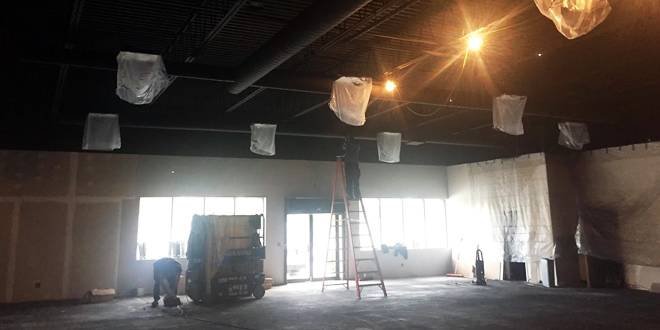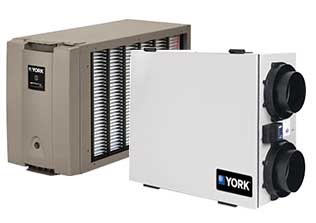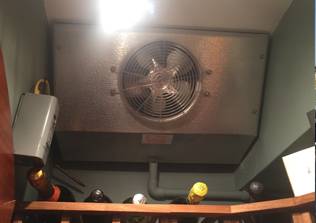
Do you ever enter a building and feel the air stifling, lacking that invigorating freshness? Inadequate ventilation is a widespread issue, impacting our health, comfort, and productivity. But worry not; understanding how buildings “breathe” – how outside air enters – is the key to unlocking a healthier, more energy-efficient indoor environment.
Understanding Ventilation: The Basics

Ventilation is the process of exchanging indoor air with fresh outdoor air, an essential practice for maintaining healthy indoor environments. It’s not just about the air intake; it’s about ensuring the air within buildings is of good quality, free from pollutants, excessive humidity, and stale odors. The significance of ventilation extends beyond comfort, impacting occupants’ health, productivity, and even the structural integrity of buildings themselves.
The Importance of Ventilation 🌬️🏠
Ventilation is key to maintaining a healthy indoor atmosphere. It ensures the removal of harmful pollutants, controls indoor humidity levels, and reduces the accumulation of unwanted odors. Beyond health, proper ventilation significantly impacts overall comfort and energy efficiency within a space.
Types of Ventilation
There are three primary methods of ventilation: natural, mechanical, and hybrid. Each method offers distinct advantages and can be selected based on the specific needs of a building and its occupants.
1. Natural Ventilation
Natural ventilation utilizes the design of a building to allow air movement through windows, doors, and other openings, relying on wind and thermal differences to drive air exchange. This method is energy-efficient and leverages environmental conditions to improve indoor air quality. However, its effectiveness can be limited by external weather conditions, building location, and design constraints.
2. Mechanical Ventilation
Mechanical ventilation involves the use of fans and ventilation systems to control the flow of air within a building. This method provides consistent and controllable air exchange, ensuring indoor air quality regardless of outdoor conditions. While it consumes more energy than natural ventilation, modern systems are designed to be highly efficient, minimizing energy use while maximizing ventilation effectiveness.
3. Hybrid Ventilation
Hybrid ventilation combines elements of both natural and mechanical ventilation to optimize air quality and energy efficiency. This method automatically adjusts between natural and mechanical modes based on conditions such as indoor and outdoor temperatures, humidity levels, and occupancy. Hybrid systems offer the benefits of both approaches, providing efficient, controlled ventilation that can adapt to changing environmental conditions and user needs.
The Importance of a Balanced Approach
Selecting the right ventilation method is crucial for achieving a balance between maintaining optimal indoor air quality and minimizing energy consumption. A tailored approach, considering the unique characteristics and requirements of each space, ensures that buildings are not only comfortable and healthy but also environmentally and economically sustainable.
Natural Ventilation: Harnessing the Power of Outdoor Air 🌳💨

Natural ventilation is an effective and energy-efficient way to maintain fresh and healthy indoor air quality by utilizing the natural forces of wind and thermal buoyancy. It plays a crucial role in creating comfortable living and working environments, especially in areas where the climate is conducive to such an approach. This section explores how natural ventilation works, its benefits, and considerations for its implementation.
How Natural Ventilation Works
Natural ventilation relies on the principle of air movement from high-pressure areas to low-pressure areas and the natural rise of warm air. Openings such as windows, doors, and vents are strategically placed to facilitate this air flow, allowing fresh air to enter and stale air to exit a building. The design of a building, including its orientation, layout, and the placement of openings, significantly impacts the effectiveness of natural ventilation.
Benefits of Natural Ventilation
- Energy Savings: One of the most appealing aspects of natural ventilation is its potential to reduce energy consumption. By minimizing the need for mechanical cooling and heating, buildings can achieve significant energy savings.
- Improved Air Quality: Natural ventilation ensures a continuous supply of fresh outdoor air, diluting and displacing indoor air pollutants and thereby improving the overall air quality.
- Enhanced Comfort: Air movement can also contribute to thermal comfort, making indoor spaces feel cooler and more pleasant without the need for air conditioning.
Considerations for Effective Implementation
- Climate: Natural ventilation is most effective in climates where temperatures are moderate, and the outdoor air is clean and fresh. In extreme climates, its effectiveness may be limited.
- Building Design: The success of natural ventilation largely depends on the building’s design. Factors such as the building’s orientation, window placement, and the availability of cross-ventilation paths play critical roles.
- Air Quality: In areas with high levels of outdoor pollution, natural ventilation might introduce pollutants indoors. In such cases, additional air filtering measures may be necessary.
The Role of Hybrid Systems
While natural ventilation offers numerous benefits, its limitations in certain climates and conditions have led to the development of hybrid ventilation systems. These systems combine the best of both natural and mechanical ventilation, automatically switching between modes based on indoor and outdoor environmental conditions. This ensures optimal air quality and comfort while maintaining energy efficiency.
Mechanical Ventilation: Controlled and Efficient Air Exchange 🛠️🔄💨
Mechanical ventilation systems represent a cornerstone of modern building design, providing a controlled method of exchanging indoor air with fresh outdoor air. These systems are especially crucial in environments where natural ventilation is insufficient due to climatic conditions, air quality issues, or architectural constraints. This section delves into the workings of mechanical ventilation, its advantages, and how advancements in technology have made these systems more energy-efficient and effective than ever before.
Understanding Mechanical Ventilation
Mechanical ventilation utilizes fans and ductwork to manage air flow within a building. This can include the introduction of fresh air, the extraction of stale air, and the circulation of air within spaces. There are several types of mechanical ventilation systems, including exhaust, supply, and balanced systems, each serving different needs and applications.
Advantages of Mechanical Ventilation
- Consistent Air Quality: Mechanical systems can provide a steady supply of fresh air regardless of external weather conditions, ensuring optimal indoor air quality at all times.
- Humidity Control: These systems can also help control indoor humidity levels, reducing the risk of mold growth and other moisture-related issues.
- Energy Recovery: Many modern mechanical ventilation systems include energy recovery features, which allow the system to capture and reuse energy from exhaust air, significantly reducing heating and cooling costs.
Technological Advancements
Recent advancements in HVAC technology have greatly increased the efficiency and effectiveness of mechanical ventilation systems. Features such as variable speed fans, heat recovery ventilators (HRVs), and energy recovery ventilators (ERVs) have made it possible to ventilate buildings without significant energy penalties. Smart controls can further optimize performance by adjusting ventilation rates based on occupancy, indoor air quality sensors, and other parameters.
Implementing Mechanical Ventilation
When implementing a mechanical ventilation or air conditioning system, it’s important to consider the specific needs of the space, including the building’s layout, occupancy patterns, and local climate. Professional assessment and installation ensure the system is properly sized and configured for maximum efficiency and comfort.
The Future of Mechanical Ventilation
As we move towards more energy-efficient and sustainable building practices, the role of mechanical ventilation systems in achieving these goals is undeniable. Innovations in technology and design continue to push the boundaries of what’s possible, offering solutions that not only improve indoor air quality but also minimize environmental impact.
Hybrid Ventilation Systems: The Best of Both Worlds 🌍🔁💨
Hybrid ventilation systems, also known as mixed-mode ventilation, represent a cutting-edge approach to building design and HVAC technology. These systems intelligently combine natural and mechanical ventilation methods to optimize indoor air quality, comfort, and energy efficiency. This section explores the concept of hybrid ventilation, its operational dynamics, benefits, and considerations for implementation.
Concept and Operation
Hybrid ventilation systems automatically switch between natural and mechanical ventilation modes based on predefined conditions such as temperature, humidity, air quality, and occupancy. These systems are designed to take advantage of natural ventilation whenever the outdoor conditions are favorable, thereby reducing energy consumption. When conditions are unsuitable for natural ventilation, the system seamlessly transitions to mechanical ventilation to maintain indoor air quality and comfort.
Key Benefits
- Optimized Energy Efficiency: By leveraging natural ventilation when possible, hybrid systems significantly reduce energy consumption compared to traditional mechanical-only systems.
- Enhanced Indoor Air Quality: Hybrid systems ensure a constant supply of fresh air, adapting to varying conditions to maintain optimal indoor air quality.
- Improved Comfort: These systems provide better control over indoor environmental conditions, adapting to provide comfort across a wide range of scenarios.
- Sustainability: By reducing reliance on mechanical ventilation, hybrid systems contribute to more sustainable building practices and lower carbon footprints.
Technological Advancements
Advancements in sensors, controls, and automation are the backbone of hybrid ventilation systems. These technologies enable precise monitoring and control of environmental conditions, ensuring the system operates efficiently. Smart controls can learn from occupancy patterns and environmental conditions, further optimizing the system’s performance over time.
Implementation Considerations
- Design Integration: Effective hybrid ventilation requires careful integration into the building’s design from the outset, considering factors such as orientation, window placement, and architectural features.
- Climate Suitability: The effectiveness of hybrid systems can vary depending on local climate conditions, requiring a thorough analysis to determine the most suitable approach.
- Cost and Complexity: The initial cost and complexity of hybrid ventilation systems can be higher than traditional systems. However, these are often offset by significant energy savings and improved occupant satisfaction over the building’s lifecycle.
Moving Forward
Hybrid ventilation represents a forward-thinking solution to indoor air quality and energy efficiency challenges in buildings. By intelligently combining natural and mechanical ventilation, these systems offer a versatile and sustainable approach to creating comfortable, healthy indoor environments.
Elevate Your Air Quality with Us
Ready to breathe cleaner air and save on energy? 🌱💨 All Seasons Air Conditioning is here to guide you through the best ventilation options for your space. Let’s create a healthier, more sustainable environment together. Contact us today and take the first step toward optimal indoor comfort and efficiency! 🏡✅

